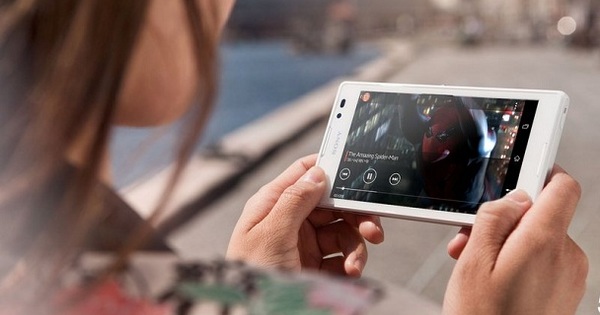The Apple iPhone Xs is a souped-up version of the iPhone X that appeared in 2017. The iPhone Xs has a better processor, camera and screen compared to its predecessor. But does that make the iPhone Xs the best smartphone?
iPhone Xs
Price from €1149 (iPhone XS)from € 1249 (iPhone XS Max)
Colors Gold, Gray, Silver
OS iOS12
Screen 5.8 inch OLED (2436x1125)
6.5 inch OLED (2688x1242)
Processor hexacore (Apple A12 Bionic)
RAM 4GB
Storage 64, 256 or 512 GB
Battery 2,658 mAh
3.174 mAh
Camera 12 megapixel dualcam (rear), 7 megapixel (front)
Connectivity 4G (LTE), Bluetooth 5, Wi-Fi, GPS
Format 14.4 x 7.1 x 0.8cm
15.8 x 7.7 x 0.8 cm
Weight 177 grams
208 grams
Other Lightning, no headphone port, esim
Website www.apple.com 8 Score 80
- Pros
- Display
- Powerful
- Cameras
- Build quality
- Ease of use
- Negatives
- Price
- Battery life
- No headphone port and dongle
- Fragile
With the iPhone X from 2017, Apple celebrated the tenth anniversary of the smartphone, with the best that Apple has to offer. That seemed disappointingly little, innovation was hard to find and we were therefore not wildly enthusiastic in our review. But Apple's return to leadership in the smartphone market was reflected in the competition, who seem to have entered a competition to see who can best imitate the iPhone X. Both good choices and bad features are almost slavishly adopted, making 2018 so far the year of smartphones with copied designs, screen notches, breakable glass housings, Android skins that resemble iOS and the removal of headphone ports without proper argument. Take the Huawei P20 Pro, Asus Zenfone 5 and the OnePlus 6, for example: I am convinced that these smartphones would have looked very different if the iPhone X had not come out. It does show that the innovation we expect from a new iPhone is not necessary at all. Moreover, most innovation is in iOS, which mainly thanks to ARKit brings smart augmented reality functions. For example for games or measuring objects in your environment.



iPhone Xs
It is therefore no great surprise that the iPhone Xs (pronounced: ten s) also has no major innovations. In addition, all S versions of the iPhone were in fact a souped-up version of their predecessor. For example, look at the iPhone 4S, 5S and 6S, which were almost identical in appearance to their predecessor. By the way, we have also explained the somewhat clumsy choice of name, because you tend to read 'extra small'. The same goes for the iPhone Xs, in fact: the iPhone X case even fits around the Xs. The design has remained the same, with the notch at the top of the impressive 5.8-inch OLED screen. Unfortunately, Apple has stuck to a glass housing, despite the iPhone X going down in the books as the most fragile smartphone ever. Of course Apple claims that the glass is less breakable and I understand that a metal housing makes wireless charging impossible. But glass is always breakable and iPhone repairs are an Apple cash cow to avoid. A case is an absolute necessity to protect the iPhone Xs from drops... and uncharming greasy fingerprints.
The iPhone Xs comes in two versions. One version is identical to the iPhone X, but there is also a larger version: the iPhone Xs Max. This is where the choice of name becomes completely inconvenient. The Max version has a huge 6.5 inch screen. The specifications and camera are otherwise the same as the Xs. But of course the price is higher, and let's get that elephant in the room out of the way right away: the prices of the iPhone Xs (from 1159 euros) and Xs Max (1259) cannot be justified in any way. The Xs Max with 512GB storage even costs 1659 euros. You may be willing to pay these prices, but the iPhones are absolutely not worth it. Xiaomi even has a marketing stunt: the XS package, where you get a good smartphone, fitness bracelet, smartwatch, laptop and bluetooth headset for 1100 euros. Not only does Apple seem to be out of control with prices, but it is also pushing the throttle.


Build quality
They can afford those price hikes, as many iPhone users remain comfortable in the Apple ecosystem. iMessage, iCloud, FaceTime, Apple Music... Apple knows how to retain users like no other with its services, so many iPhone owners don't wonder which smartphone to buy, but which iPhone when looking for a new smartphone. the best choice. And with the iPhone Xs, you get the best that Apple has to offer. You can already see that when you turn on the device, the OLED screen is fantastic: very faithfully adjusted and bright enough to illuminate an entire room. Almost the entire front of the iPhone consists of a screen, by keeping the screen edges thin and thanks to the aforementioned screen notch (also called notch). Also, the minimal bezel at the bottom of the screen is worth noting. Other manufacturers have a thicker screen edge here, because of the screen connections. Because Apple has the screen curved in the housing, the connections can be tucked away and the screen edge is also of a minimum size at the bottom. This is not new, the iPhone X already had this, but other manufacturers have still not been able to copy this. It shows that the build quality is very impressive... and waterproof too.
At the bottom of the housing you will of course find Apple's Lightning connection from 2012. Unfortunately, Apple does not yet have the courage to replace this connection with usb-c, as it dared with the Macbooks and may eventually be forced by the EU. to use this universal connector. Apple, the company that bought Beats Audio for billions and sells Airpods, also keeps the headphone port away from the iPhone, of course. Because Apple has now also stopped selling the iPhone SE and iPhone 6s, there are no longer any iPhones available with a 3.5 mm connection. If you connect your headphones wired, you have to use a dongle, which is no longer in the box. So you have to buy this separately.
The sound quality from the speaker of the device itself has improved somewhat and in stereo, but you don't really notice a huge progress.
eSim
New is that the iPhone Xs and Xs Max have eSim, a kind of built-in SIM card. In the device itself, you configure which network your eSim should connect to. No more hassle with changing cards. Unfortunately, this is still in the future, because for the time being, Dutch providers do not support eSim. But don't worry, the iPhone still has a slot for your nano SIM card.


Lightning fast
Perhaps most impressed I am with how smoothly the iPhone Xs works. iOS 12 and Apple's own A12 Bionic chipset let the benchmarks shoot through the roof. However, it is practice that counts and not the benchmark sample, but also in everyday use there is virtually no delay. Whether you start a heavy AR game or switch between different portrait modes in the camera: it goes smoothly. I only noticed with the Measure AR app that the iPhone took a little longer to analyze the environment, recognize surfaces and calculate their sizes. Configuring Face ID also went smoothly, only here I suddenly noticed that the device was getting red hot.
With the battery life of the iPhone Xs, Apple is still behind the competition. Assume that the battery will last a day, but after that it is time to hang it on the charger. Perhaps it is because the battery capacity of the iPhone is still a bit lower than its competitors. The iPhone Xs has a capacity of 2658 mAh, while smartphones with a good battery life have 3500 to 4000 mAh battery capacity. In fact, last year's iPhone X had a higher capacity of 2716 mAh. This also leads to more charging cycles and, in the long term, also to a battery that wears out faster. It's a shame that Apple still can't get along with this.
Camera
What you are guaranteed to have with an iPhone is the camera. Although the devices no longer come out as the best in our camera tests, the iPhone camera invariably stands out because of its true-to-life colors. This is of course a huge advantage, especially with portrait photos. The same goes for the dualcam of the iPhone Xs: photos are impressively good. Especially in daylight, the camera takes beautiful photos, perhaps better than its competitors. In difficult light situations, the iPhone Xs' dualcam seems to take slightly lesser photos than, for example, a Galaxy S9+ or Huawei P20 Pro. For example, with strong backlighting, the light 'leaks' over the dark areas in the shadow, which cannot be corrected in post-processing either. In dark environments, there is hardly any noise or motion blur, which in itself sounds positive. However, the camera simply sees less than the smartphone cameras from Samsung and Huawei. That's not only because the iPhone is a bit more 'conservative' in its automatic settings, but also because the aperture is a bit higher than its competitors. As a result, the lens can technically collect less light.



Daylight, artificial light and evening
The dual camera of the iPhone Xs works as you are used to from the dualcams of the iPhone X and Plus versions of the iPhone. A telephoto lens and a wide-angle lens work together, for example by being able to zoom in without loss of quality. You can also take beautiful portrait photos with depth of field effect. You can now also use a slider to configure the blurring in the background. Because the iPhone Xs takes incredibly natural photos, the portraits are very impressive. The stage light portrait modes, which make the background black, can only be adjusted a little better. Facial contours and hair were often brushed off black just too quickly.
The selfie camera is also very natural, and although you logically notice a small difference in quality with the rear cameras, you can also take very nice portrait photos with it as a do-it-yourselfer.
This selfie camera is also used for Face ID, the face unlock of the iPhone. It works smoother than ever. I also can't manage to deceive it. Nevertheless, for sensitive data and authentication for banking, I would rather opt for a pin code or (strong) password.


Conclusion
The conclusion is perhaps somewhat predictable: despite the fact that there is little innovation to be found in the iPhone Xs (and the larger Xs Max), they are the best smartphones of the moment and Apple is the leading example for the other smartphone makers. However, the price is so exaggerated that it is in no way commensurate with what you get in return. As a result, you cannot recommend the best smartphone, which is strangely contradictory.

